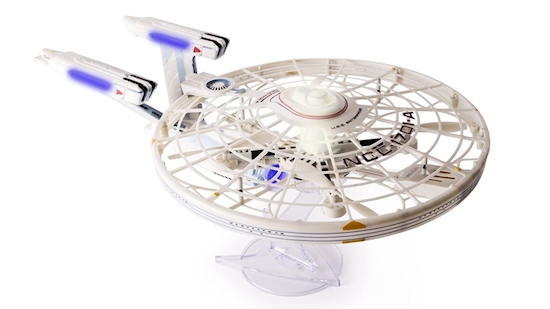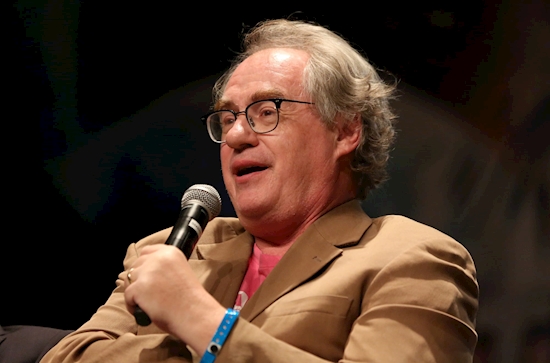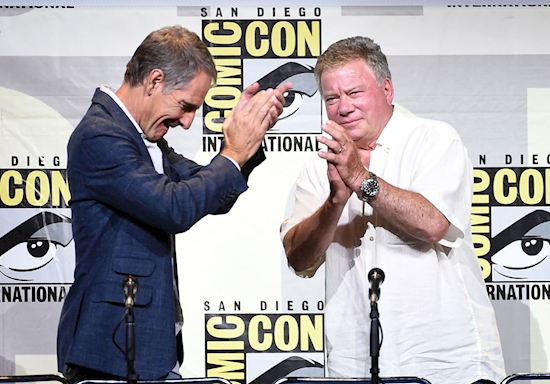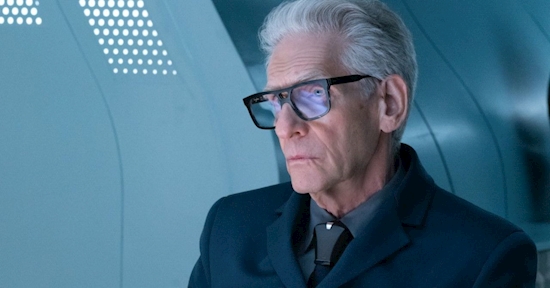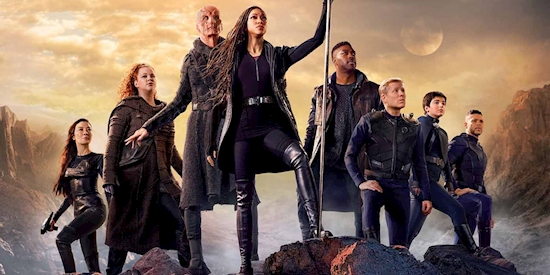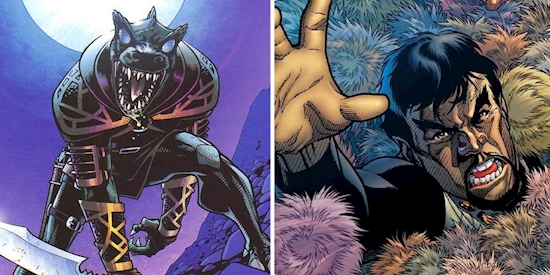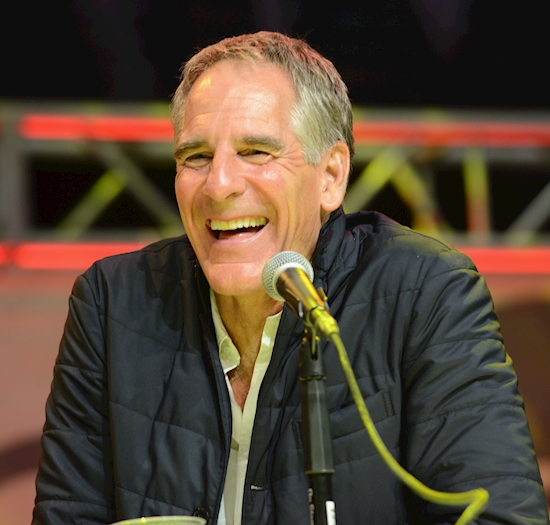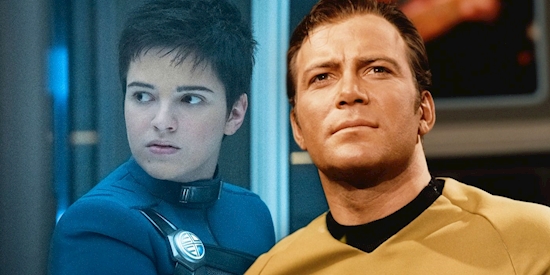Star Trek: Enterprise -- The adventures of Earth's first warp-speed starship crew
 Unquestionably the only all-around failure among the first six Star Trek TV series, Star Trek: Enterprise was doomed from day one by bad decision after bad decision, starting at the top at Paramount Studios in addition to creators/producers Brannon Braga and Rick Berman.
Unquestionably the only all-around failure among the first six Star Trek TV series, Star Trek: Enterprise was doomed from day one by bad decision after bad decision, starting at the top at Paramount Studios in addition to creators/producers Brannon Braga and Rick Berman.
Braga and Berman began the conceptualization of a new ST series between the releases of Star Trek: Insurrection and Star Trek: Nemesis. Perhaps buoyed by the incredible success of Star Trek: First Contact, Braga & Berman eschewed setting the new show a further “generation” ahead of the trilogy of 1980s/90s ST series, instead basing the show in a time period between Zefrim Cochrane’s invention of warp drive and the events of the original series.
With this in mind, according to the supplemental material in the 10th anniversary Blue Ray, Berman & Braga planned for the entire first season of Enterprise to lead up to the launch of Earth’s first proper starship. This was also the duo’s misguided justification for eliminating the “Star Trek” from the show’s title: After all, the first season wouldn’t involve any trekking at all. Paramount executives overruled this plan, demanding that the ship be launched by the premier episode’s end. As a result, season one was hurriedly replanned – and certain scripts certainly show this.
(One wonders why the Paramount “brain trust” nixed the idea of an Earth-bound series, but kept with the “Star Trek”-less series title; we suppose they just wanted to make things more challenging for the marketing team…)
And rather than go with a Jerry Goldsmith theme for the opening titles – after all, the man only won Emmy awards for the Deep Space Nine and Voyager themes, but hey – the Enterprise creative team instead went with “Faith of the Heart,” a song originally written for the Patch Adams soundtrack.
3 scrapped Star Trek projects that had great potential
Source: redshirtsalwaysdie.comStar Trek: The 10 Worst First Contacts, Ranked
Source: screenrant.comJean-Luc Picard has the phrases but Jonathan Archer had the speeches
Source: redshirtsalwaysdie.comStar Trek: Discovery's Saru Tries (& Fails) To Copy Picard
Source: screenrant.comThis awesome USS Enterprise Star Trek drone is 30% off for Black Friday
Source: space.comStar Trek: Discovery Creates A TNG Phaser Plot Hole
Source: screenrant.comStar Trek: Enterprise: 2 hilarious script ideas that were rejected
Source: redshirtsalwaysdie.comStar Trek: 10 Unpopular Opinions About Enterprise (According To Reddit)
Source: screenrant.comStar Trek's Temporal Wars Explained (& What They Mean For Discovery Season 3)
Source: screenrant.comEvery television captain from Star Trek deserves a monument
Source: redshirtsalwaysdie.comStar Trek: Discovery Reveals a Scene-Stealing Cameo From Director David Cronenberg
Source: comicbook.comStar Trek: Discovery: 10 Questions Season 3 Needs To Answer
Source: screenrant.comStar Trek: Discovery: 10 Things That Happened In Between The Time Jump
Source: screenrant.comStar Trek: Vulcans Were On Earth Before Picard's First Contact
Source: screenrant.comDiscovery's DS9 & Voyager References Make It Star Trek's Biggest Show
Source: screenrant.comStar Trek: Every Pet Kept On A Starship (So Far)
Source: screenrant.comStar Trek: Comic Shines New Light On Classic Alien Races
Source: screenrant.comStar Trek: Voyager's Uniforms Created A Plot Hole
Source: screenrant.comCaptain Archer could be the Federation's President
Source: redshirtsalwaysdie.comHow Discovery's Burn Allowed Star Trek To Revive TOS' Generation Ships
Source: screenrant.comStar Trek: Enterprise Captain Jonathan Archer Releases Presidential Campaign Ad
Source: screenrant.comBy season 3, the audience of 12½ million who’d tuned in for the series’ inaugural episode had been cut by nearly 70% to under 4 million. Other than finally condescending to get “Star Trek” back in the show title, measures were made to alienate audiences both loyal and potential. Continuity and even the very philosophy of Star Trek was blown away in series 3, which essentially turned the Enterprise into a warship to take on enemies that ST fans who’d seen every episode of every series hadn’t heard of and didn’t care about much.
By the time Star Trek: Enterprise was announced without fanfare as to be wrapped after season 4, few beyond the absolute devotees cared – and the final episode scared as many as them off as possible, too.
Star Trek Enterprise – Cast and crew
Among the many disappointments brought fans in Enterprise, the characters may have taken the biggest hit of all. This cast can really only boast three truly fleshed-out, deep characters: Captain Archer, Tripp Tucker and T’Pol. Heck, characters like Sarek and Shran got more quality screen time on Enterprise than Ensign Mayweather – and perhaps this is yet another reason why Enterprise is so unloved even among the fanbase. After all, who wants to cosplay as Malcolm Reed?
Ah, well, we’ll have to chalk up dramatic losses such as Hoshi Sato and Dr. Phlox as just more misfires from a TV series absolutely loaded with them.
Captain Jonathon Archer (Scott Bakula) – “Earnest” is a good single descriptor of Captain Archer, much of whose backstory fans were robbed of thanks to studio executives’ strange insistence that some dozen story ideas be crammed into a two-part episode. A bit of a figurehead for the human race in many cases – shades of Janeway! – Archer seeks to explore an exciting new frontier, well, earnestly. Retroactive note to the Enterprise creative team: We liked Archer better when he was the serious-yet-disarming sort rather than the shouty Archer of season 3.
T’Pol, science officer (Jolene Blalock) – Another in the honored Star Trek traditions of Vulcan Confidant and Student of humanity, T’Pol is ultimately probably thought as much of an oddball on her home planet as the relatively docile Worf was on his. T’Pol is the rare Vulcan of the 22nd century who flies in the face of Vulcan dogma and comes to respect those ever-resourceful and “fascinating” homo sapiens. Indeed, she ultimately resigns her commission from the Vulcan High Command so as to assist Archer and his crew, but especially the so-human Tucker…
Commander Charles “Trip” Tucker, chief engineer (Connor Trinneer) – Trip and Archer were longtime friend before the first mission of the Enterprise. Within the ruling troika of Enterprise, Tucker was the glue between the often polar opposite Archer and T’Pol. He’s also the sense of humor guy, the crew-relations guy and the most likeable character on the show guy. Like Archer, Trip went dark in season 3 to the detriment of his character but was back in fine form by season 4 … before he was stupidly killed in a stupid way for stupid non-reasons.
Ensign Hoshi Sato, translator/interpreter/communications officer (Linda Park) – One of the two shafted characters on this series, Ensign Sato never really got a chance to shine after season 1. (Unless you count the surprising badassery of her mirror-universe version late in the series’ run.) One of the stars of “Broken Bow,” subplots of Sato’s friendship with Archer, her fears of outer space and the difficulties of exploring the freaking galaxy *without a universal translator* rarely come to the fore, much to a potentially great character’s detriment.
Doctor Phlox (John Billingsley) – The other Enterprise character whose best bits and character development never truly came to fruition. Phlox was sadly more often used as a plot device portrayed as a victim of Terran xenophobia or sleep deprivation, than a driving force. What nuggets we do find out about his history or “gloriously” complicated mating rituals of Denobulans are quite interesting, but Phlox in the end goes down as the most underused alien character on a Star Trek bridge crew since Arex.
Lt. Malcolm Reed, armory officer (Dominic Keating) – You’ve got to believe that if the show’s creative team could take a do over on the whole Malcolm Reed character, they certainly would. Whenever in a desperate or difficult situation, Lt. Reed could be counted on … to morph into his version of a whinier Pvt. Hudson from Aliens. On top of this, his everyday incompetence can be blamed for at least two cultural and/or temporal distortions, and his failure at weapons took the Enterprise out of many a skirmish. Just bloody awful.
Ensign Travis Mayweather (Anthony Montgomery) – This guy was also on Star Trek: Enterprise, with a couple of episodes even devoted to his family members, but we’ll be damned if we can think of anything noteworthy about him…
About that final episode...
One can’t really discuss the relative quality of Star Trek: Enterprise without examining “These are the Voyages,” the pretty much universally despised concluding episode seemingly designed to chase off any remaining Enterprise devotees.
Like most of Star Trek: Enterprise itself, “These Are The Voyages” suffers from the result of making every single behind-the-scenes decision incorrectly. From its conceit as a frame story set within a fairly inconsequential and unmemorable episode of The Next Generation (season 7’s “The Pegasus”) to the rushed feeling throughout (Surprise, it’s six years later, yet not one of the crewmen has risen in rank!) to the utterly pointless death of Tripp, arguably the series’ most popular character, this episode manages to turn off Star Trek fans of all stripes and kill the prospects for another Star Trek TV series for nearly a decade and a half.
Ah, Enterprise, what happened…? Or, more precisely, why did every single bad decision have to be implemented so thoroughly?

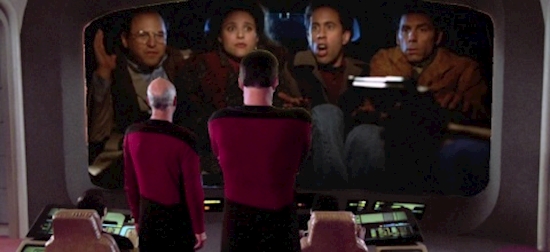
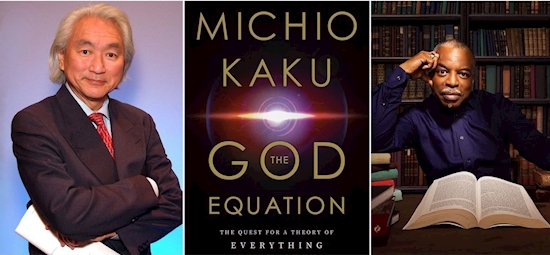
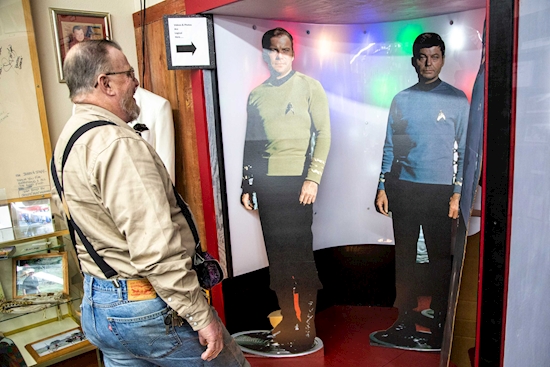
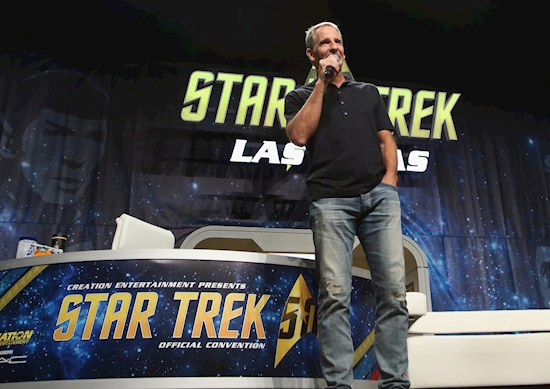
-to-copy-picard.jpg)
